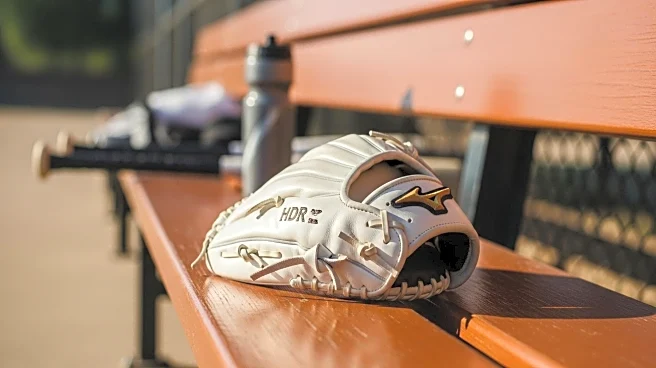What's Happening?
Zack Gelof, a player for the Oakland Athletics, has dislocated his left shoulder, which will prevent him from participating in the remainder of the 2025 regular season. This injury is part of a series of setbacks Gelof has faced this year, including a hook of the hamate fracture and a stress reaction in his ribs. Gelof, who made his season debut on July 4, was initially optioned back to the minors after struggling in his first few games but returned to the team in August after improving his performance at Triple-A Las Vegas. The injury is a recurrence of a previous shoulder issue, highlighting Gelof's aggressive style of play, which has been both admired and a source of concern due to its physical toll.
Why It's Important?
Gelof's absence is a significant blow to the Oakland Athletics, as they lose a player known for his hustle and defensive prowess. His injury underscores the challenges athletes face in maintaining peak performance amidst physical setbacks. For the Athletics, this means adjusting their lineup and strategy to compensate for the loss of Gelof's contributions on the field. The team's ability to adapt will be crucial as they navigate the remainder of the season without one of their key players. This situation also highlights the broader issue of athlete injuries and the impact on team dynamics and performance.
What's Next?
The Athletics will need to explore options to fill the gap left by Gelof's absence, potentially looking at other players within their roster or considering trades. Gelof will focus on recovery and rehabilitation, aiming to return to form for the next season. The team management and coaching staff will likely reassess their training and injury prevention strategies to mitigate similar occurrences in the future. Fans and analysts will be watching closely to see how the Athletics manage this challenge and whether they can maintain competitive performance without Gelof.
Beyond the Headlines
Gelof's injury raises questions about the physical demands placed on athletes and the long-term implications of aggressive playing styles. It also prompts discussions on the effectiveness of current injury prevention and management practices within professional sports. As teams strive for success, balancing player health and performance becomes increasingly critical, potentially influencing future approaches to training and player development.










